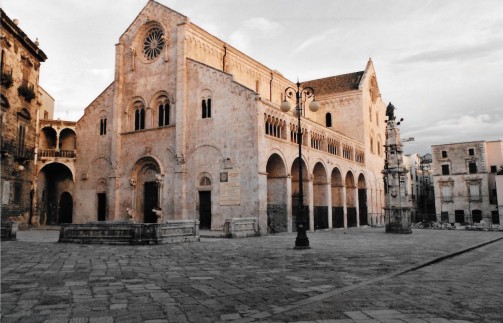Located in the heart of the historic center, the square is dominated by the Co-Cathedral of Santa Maria Assunta, one of the finest examples of Apulian Romanesque architecture. It is surrounded by historic palaces, medieval architecture and underground archaeological routes. It constitutes the spiritual and urbanistic centerpiece of the ancient city.
The square is developed around the Co-cathedral, built between the 12th and 13th centuries, with a tripartite facade, central rose window and carved portal. The parvis houses stone artifacts and access to crypts and the early Christian hypogeum. The area has been the subject of excavations and restorations that have returned a layered heritage to the city: from early medieval tombs to Byzantine mosaics.









